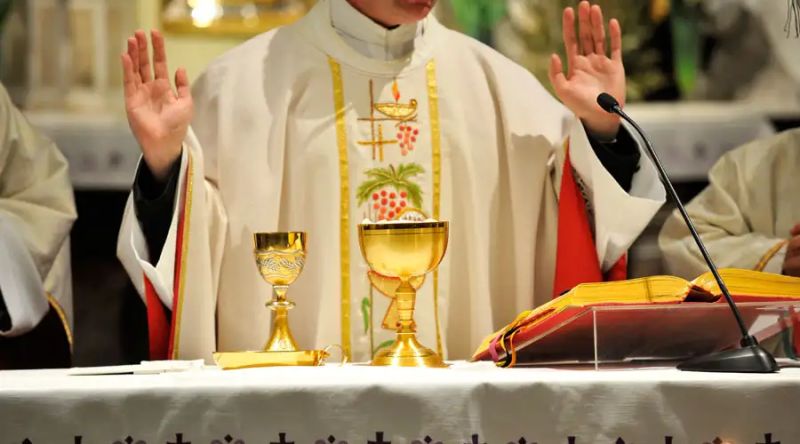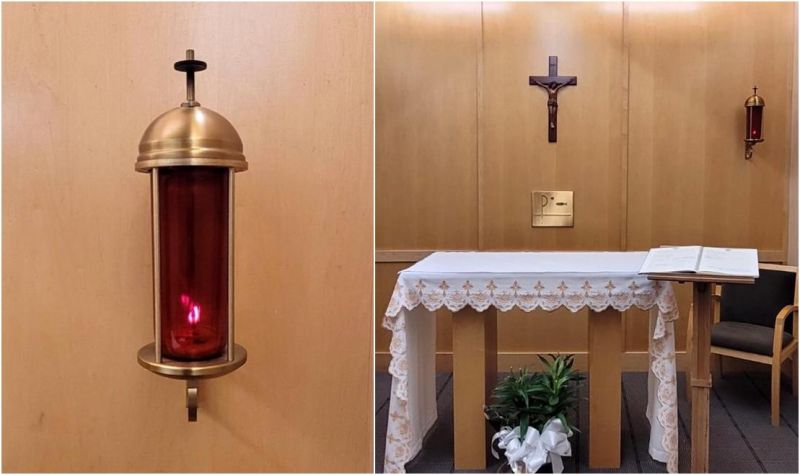Results of medical exam builds case for ‘incorrupt’ body of Sister Wilhelmina, says bishop
Washington, D.C. Newsroom, Aug 22, 2024 / 18:03 pm (CNA).
The results of a medical examination of the body of Sister Wilhelmina Lancaster, OSB, have confirmed that there were no signs of decomposition when her body was exhumed last year, according to a statement from Bishop James Johnston of the Missouri Diocese of Kansas City-St. Joseph.
The study, conducted by medical experts, and commissioned by the bishop, helps build the case that the body of the deceased Benedictine nun could be incorrupt.
Sister Wilhelmina — who founded the traditionalist Benedictines of Mary, Queen of Apostles order in Gower, Missouri — died on May 29, 2019. However, when her body was exhumed on April 28, 2023, to be moved for interment in the abbey church, the sisters did not find a skeleton. Instead, they found a well-preserved body that maintained the recognizable features of their former prioress.
Thousands of pilgrims flocked to the rural town to see the potential miracle.
The final report on the examination, which the diocese announced on Aug. 22, 2024, found a lack of any detected features of decomposition usually seen under the conditions of her interment.
Sister Wilhelmina’s body was not embalmed and did not receive any other treatments prior to her burial. She was buried in an unsealed wooden casket. Although the casket had deteriorated, her body was not decomposed and her habit and clothing showed no features of breakdown. It further found that the conditions of her death and burial would not be expected to protect against decomposition.
“The condition of her body is highly atypical for the interval of nearly four years since her death, especially given the environmental conditions and the findings in associated objects,” the report explained.
Additional tests were conducted on the soil to determine whether anything abnormal could have prevented the body’s decomposition. However, there were no unusual elements in the soil.
“Within the limits of what has been observed during this time, the body of Sister Wilhelmina Lancaster does not appear to have experienced the decomposition that would have normally been expected under such previous burial conditions,” Johnston said in a statement when he announced the findings.
The medical examiners also interviewed eyewitnesses to the burial and the exhumation, along with their study of the casket and the sister’s body.
According to the bishop, the medical team was only able to conduct “a limited examination.” The diocese did not announce whether there would be any further evaluations of the body or any other actions taken.
Johnston added that there is no official Catholic Church protocol for determining whether a body is incorrupt and noted that “incorruptibility is not considered to be an indication of sainthood.” At this time, he said, there are no plans in the diocese to initiate a cause for sainthood.
“The condition of the remains of Sister Wilhelmina Lancaster has understandably generated widespread interest and raised important questions,” the bishop continued. “I pray that Sister Wilhelmina’s story continues to open hearts to love for Our Lord and Our Lady.”
Sister Wilhelmina entered the Oblate Sisters of Providence shortly after graduating valedictorian of her high school. Following the reforms of the Second Vatican Council, the sister made an effort to preserve the traditions of the Catholic Church, particularly the wearing of a habit.
When Sister Wilhelmina could not convince the order to return to the habit, she founded a new order with the help of the Priestly Fraternity of Saint Peter — a priestly society dedicated to the Traditional Latin Mass. She founded the Benedictines of Mary, Queen of Apostles when she was 70 years old, initially in Pennsylvania before relocating to Missouri.
The order took on a contemplative and Marian charism, with an emphasis on praying for priests. The sisters are devoted to the Traditional Latin Mass and use the 1962 Monastic Office, with its traditional Gregorian Chant, in Latin. The nuns also record chants and have reached the top of Billboard’s Classical Traditional Chart several times.
This story has been updated.





